Decoding Names, Mints, and Dates in Middle Persian (Pahlavi)
Reading the Language of Empire
The coins of the Sasanian Empire (224–651 AD) are among the most visually detailed and symbolically rich artifacts of the ancient world. For collectors and historians, reading a Sasanian coin is not only about identifying a ruler or date—it’s about connecting to a complex imperial culture grounded in religion, monarchy, and art.
In this guide, we’ll walk through how to read the inscriptions and imagery on a silver drachm of Khusrau II (reigned AD 590–628), one of the most powerful and prolific rulers of the Sasanian dynasty. We’ll focus on Pahlavi script, the Middle Persian writing system used on these coins, and explain how to identify four key elements:
- Ruler’s Name
- Royal Motto
- Mint Location
- Regnal Year
Each part of the coin holds a clue—let’s break them down.
The Ruler’s Name
(Obverse – Right)
Location: Right side of the obverse (front)
Script: Pahlavi
Translation: Khusrau (also written as “Husrō” or “Khusraw”)
The name appears beside the portrait of the king. In Pahlavi, the script is stylized and can be hard to decipher for beginners. In this example, the name 𐭧𐭥𐭮𐭫𐭥 (HWSLW) translates to Khusrau. The king is depicted in his royal crown, often with crescent, star, and feather motifs, symbolizing divine sanction and royal authority.
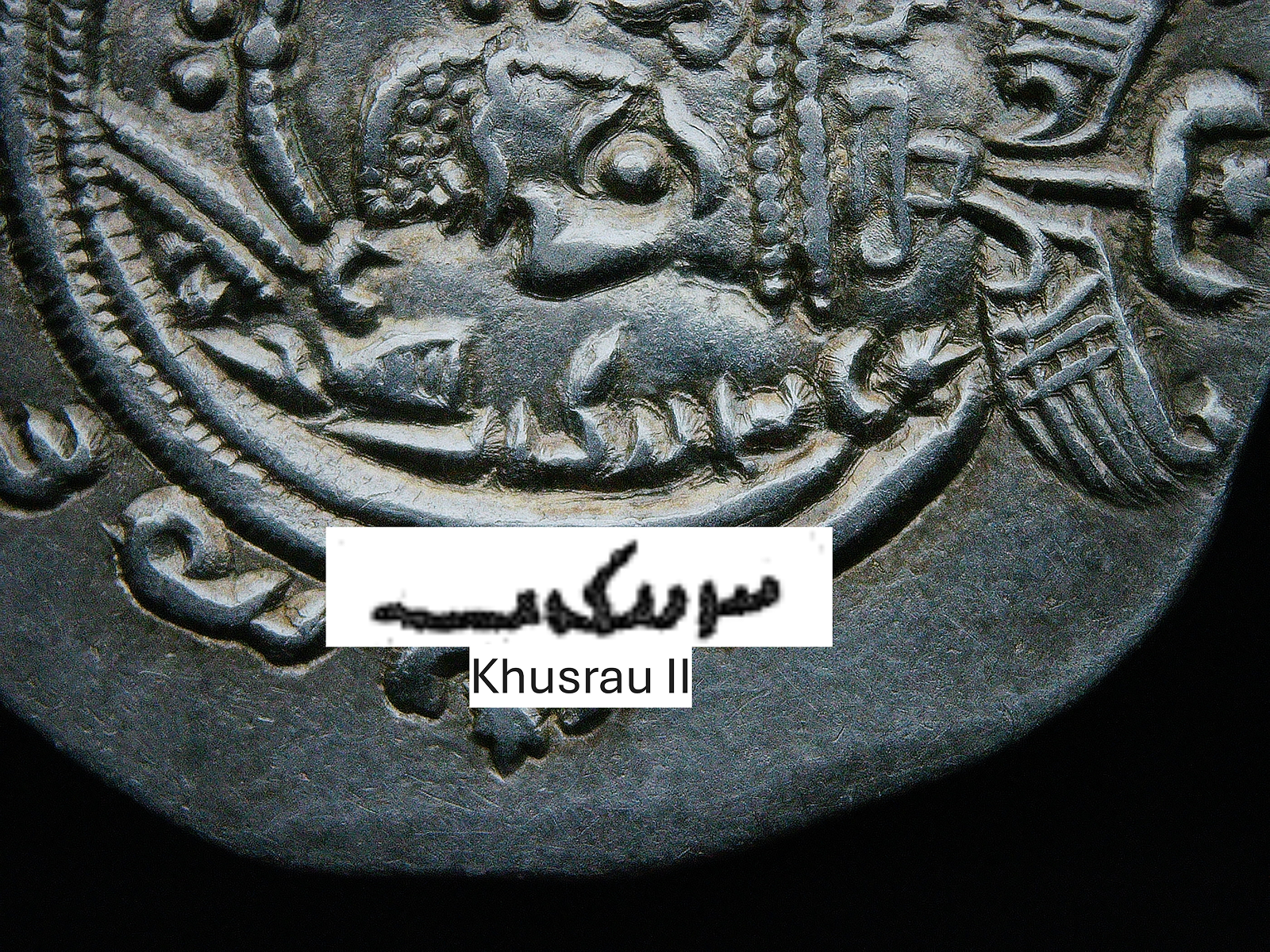
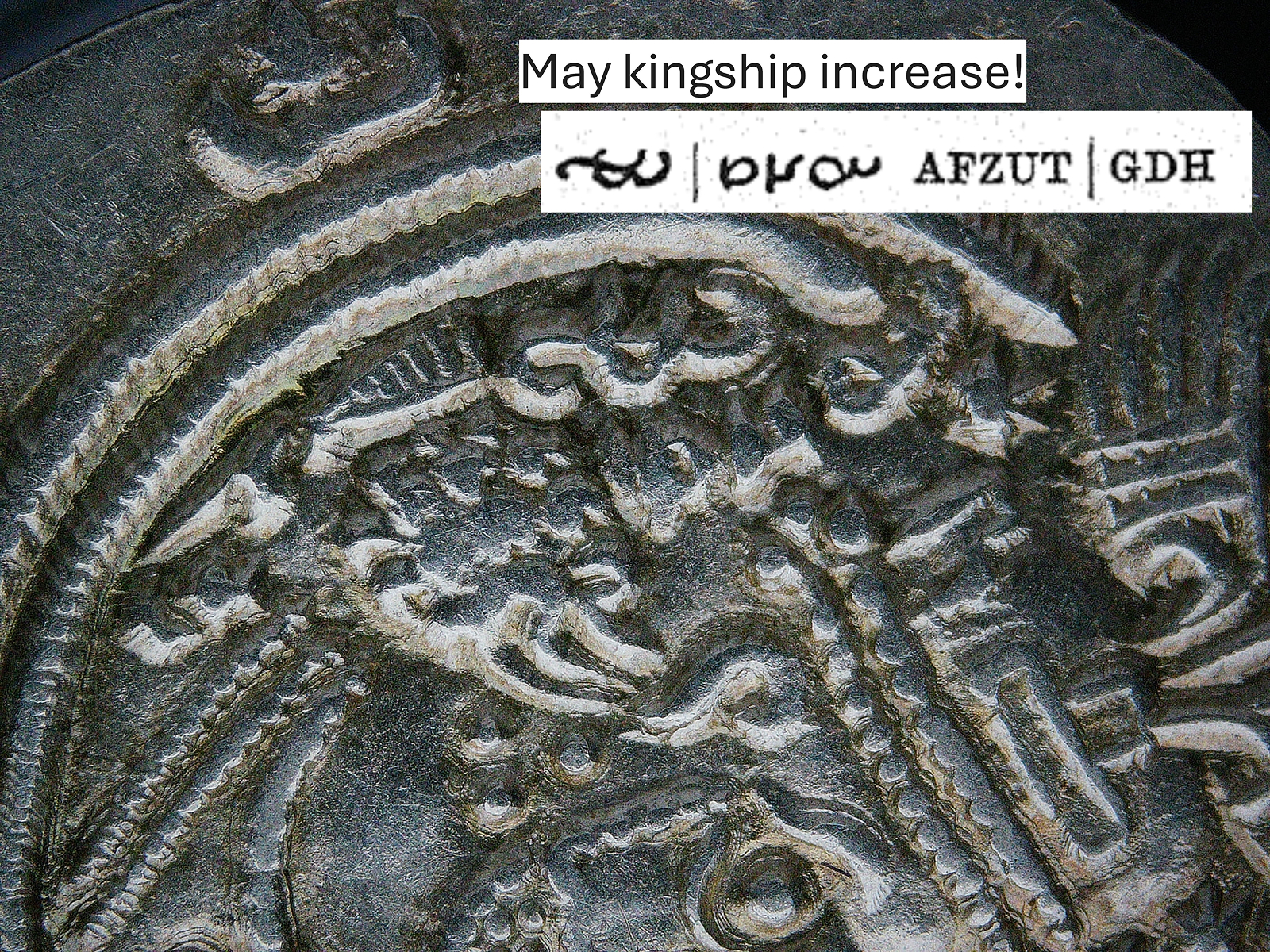
The Royal Motto
(Obverse – Left)
Location: Left side of the obverse
Script: Pahlavi
Translation: “May the kingship increase!”
In Pahlavi: 𐭫𐭥𐭯𐭣 𐭯𐭫𐭩𐭪 (GDH AFZUT)
This phrase appears on nearly all Sasanian coins and was a standard royal invocation. “GDH” stands for xwarrah (divine glory), and “AFZUT” is the imperative form of to increase. Together, they serve as a blessing on the king’s reign.
The Mint Name
(Reverse – Right)
Location: Right side of the reverse (back)
Script: Pahlavi
Translation: Darabgird (DA) – A city in the province of Fars
This is where the coin was struck. Sasanian mint names are abbreviated in Pahlavi script and require reference to mint tables (as shown in your sources). The letters DA (𐭲𐭠) stand for Darabgird, which was an important minting center in the empire.
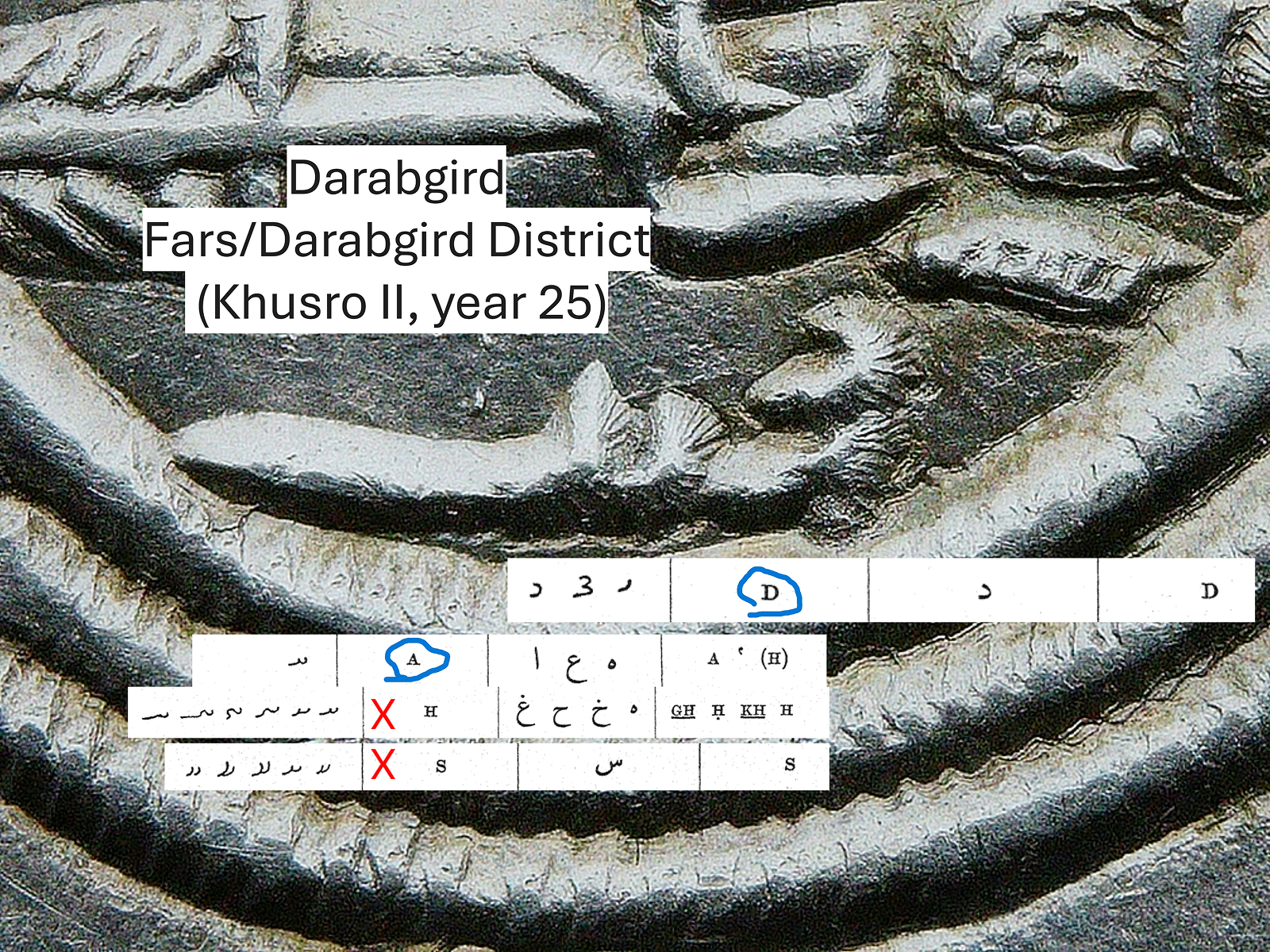
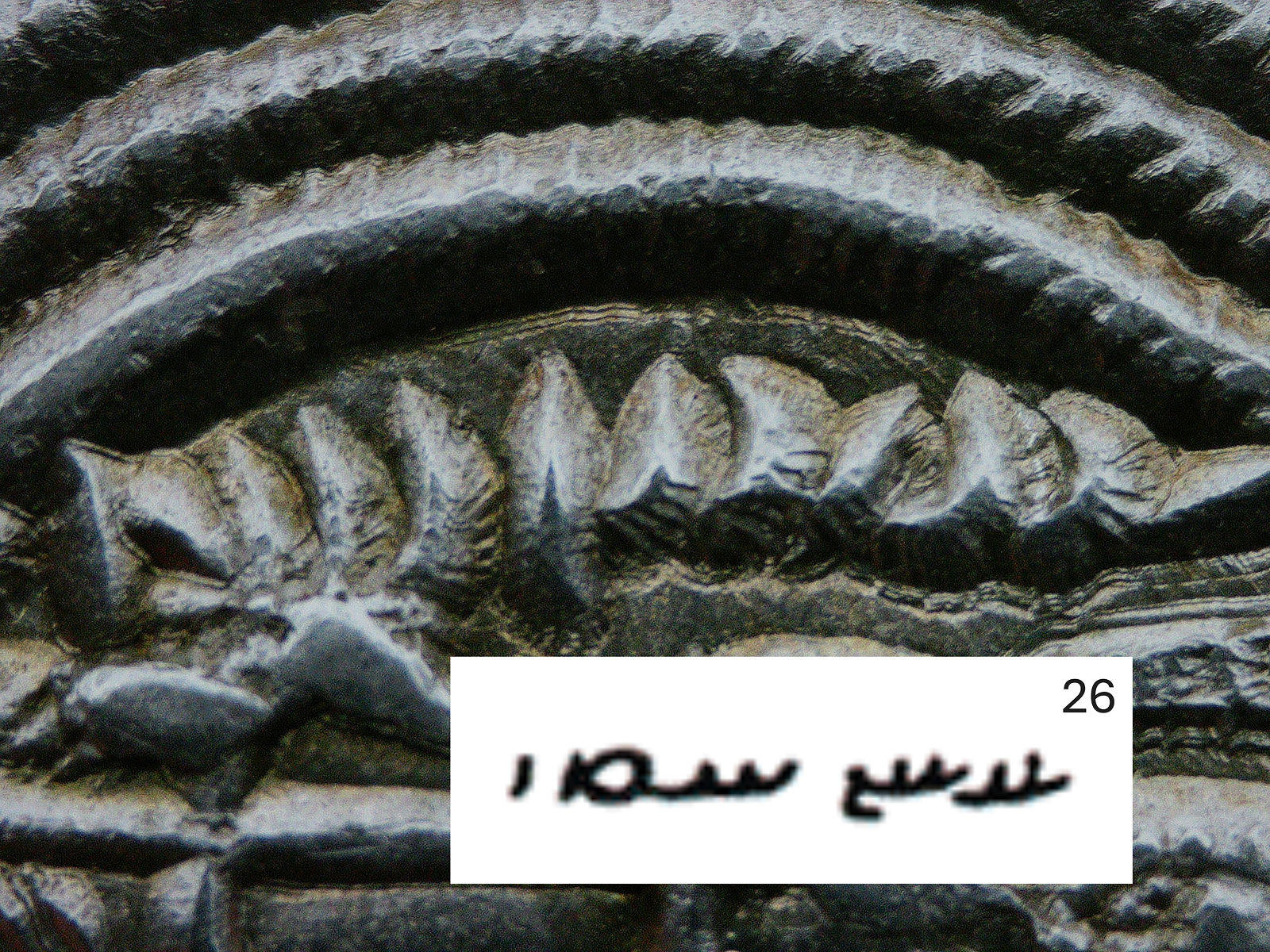
The Regnal Year
(Reverse – Left)
Location: Left side of the reverse
Script: Pahlavi
Translation: Year 26 of Khusrau II’s reign
Sasanian coins were dated by the number of years the ruler had been on the throne. Year 26 corresponds to AD 616–617, calculated by adding the regnal year to the accession year (AD 590).
Bonus Detail:
The Outer Margin Inscription “ʾp̄d” (ABD)
In addition to the standard elements like the ruler’s name, mint, royal motto, and regnal year, some late Sasanian coins—especially those of Khusrau II—feature additional inscriptions in the outer margins of the obverse. One such inscription is:
- Pahlavi: ʾp̄d (ABD)
- Location: Obverse, lower right margin
- Likely Meaning: Die control mark or engraver signature
This sequence is not part of the main royal legend or mint signature but is believed to function as a control or administrative identifier, perhaps denoting a specific die workshop or engraver. It appears sporadically across late issues (typically regnal years 24–33), especially on coins struck at Darabgird and other major mints.
Where it Appears
- Often in the outer right margin of the obverse
- May vary in clarity depending on the strike
- Not present on all issues—considered a variant detail
Tip for Collectors:
If your Sasanian coin includes margin inscriptions like “ʾp̄d,” it may belong to a specific die group or series, adding collectible interest and helping numismatists study die linkage and regional mint practices during Khusrau II’s prolific reign.
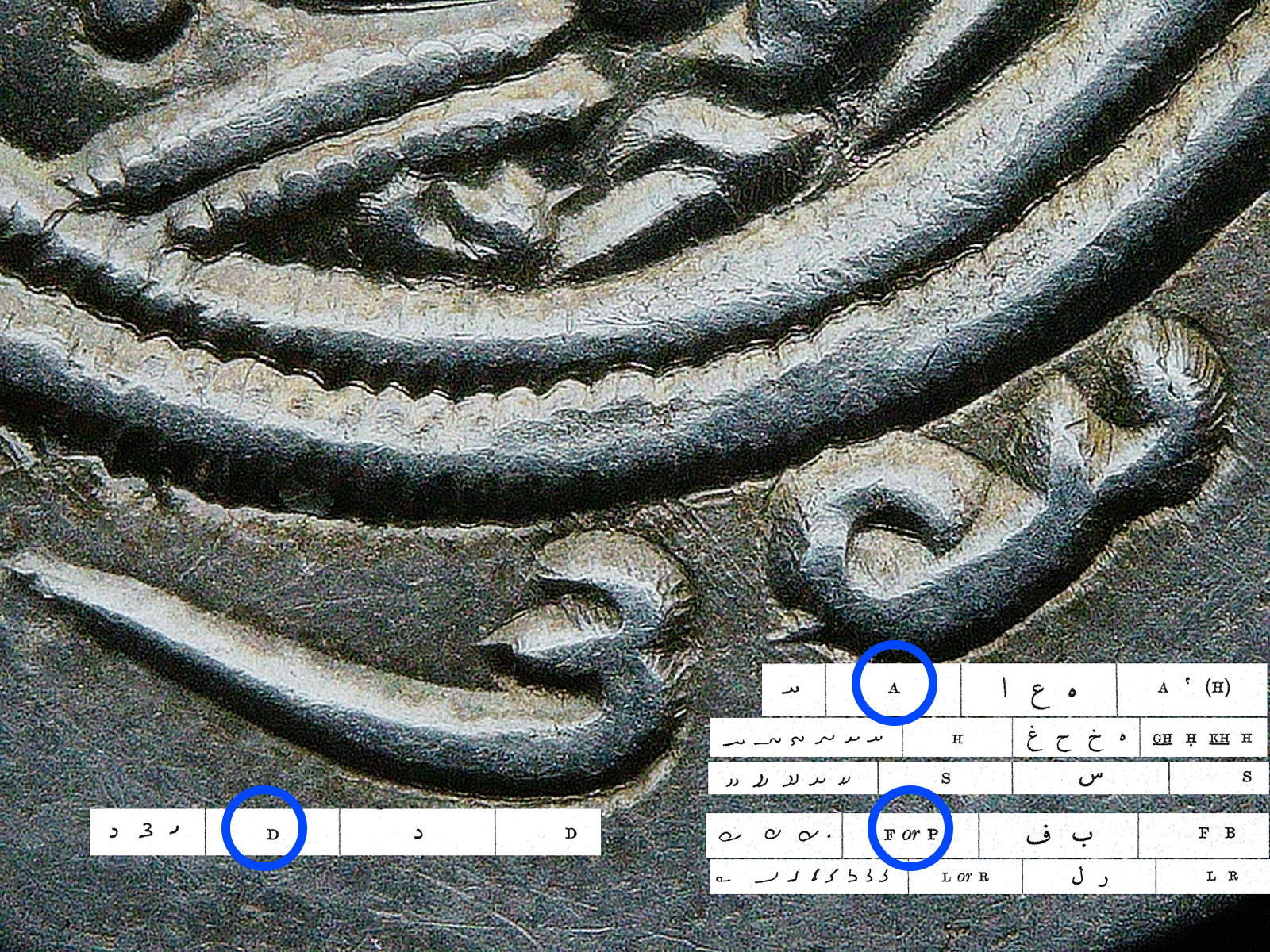
Reading Tips for Collectors
- Start with the Crown: It’s often the easiest way to identify the ruler.
- Use Reference Charts: Cross-check Pahlavi inscriptions with known examples.
- Look for Consistency: Motto, mint, and regnal year will appear in similar places on most Sasanian drachms.
- Use a Loupe or Macro Lens: The fine lines of Pahlavi can be difficult to distinguish with the naked eye.
- Compare Multiple Coins: No two are perfectly alike, but the structure is consistent.
Conclusion:
Every Coin Is a Lesson in Empire
By learning to read Sasanian coins—especially with examples like this Khusrau II drachm—you gain insight not only into imperial history but into how ancient rulers used coinage as a vehicle for legitimacy, faith, and power. These silver discs carry more than silver—they carry messages of divine kingship, Zoroastrian faith, and cultural pride.
Explore More with TerraNumis
At TerraNumis, we’re dedicated to offering authentic, research-backed ancient coins—alongside the tools and education to understand them. If you’re interested in owning a coin of Khusrau II or learning more about Sasanian numismatics, reach out to us directly. We’re always here to help you explore history you can hold.

